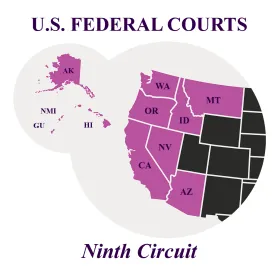Referring to the act of counterfeiting as “hard core” or “first degree” trademark infringement, the US Court of Appeals for the Ninth Circuit for the first time confirmed that the Lanham Act requires a likelihood of confusion in order for the trademark holder to prevail on a counterfeiting claim. Arcona, Inc. v. Farmacy Beauty, LLC, et al., Case No. 19-55586 (9th Cir. Oct. 1, 2020) (Lee, J.) In doing so, the Court affirmed a grant of summary judgment in favor of defendant Farmacy Beauty in a counterfeiting action brought by skin care brand Arcona.
Arcona’s counterfeiting claims (which remained in the district court action after Arcona requested dismissal of its trademark infringement and unfair competition claims) stemmed from Farmacy Beauty’s use of the term EYE DEW on its skincare products, which Arcona asserted to be counterfeit versions of its eye cream sold in the United States under the registered EYE DEW trademark. The district court, however, found that dissimilar packaging and branding made it “implausible” that consumers would be tricked into believing that Farmacy’s EYE DEW product was actually one of Arcona’s skin care products, and granted partial summary judgment for Farmacy on the counterfeiting claim. Arcona appealed.
Arcona argued that it was not required to show a likelihood of consumer confusion with respect to the parties’ EYE DEW eye creams in order to pursue its trademark counterfeiting claim. The Ninth Circuit starkly disagreed, finding that the plain language of the Lanham Act, 15 USC § 1114, expressly states that likelihood of confusion is a requirement for a counterfeiting claim.
The Ninth Circuit also rejected Arcona’s alternative argument, that there should be a presumption of likelihood of confusion based on the parties’ use of the identical mark EYE DEW. The Court explained that in a claim of counterfeiting—even with identical trademarks—there is no presumption of consumer confusion if the products themselves are not identical. Here, evidence demonstrated that the parties sold their respective EYE DEW products in very different packages, with Arcona’s eye cream being in a “tall, cylindrical, silver bottle encased in a slim, cardboard outer box,” and Farmacy’s eye cream sold in a “short, wide, white jar, along with a squarish outer box.” In reviewing the parties’ respective products as a whole, including prominent displays of the respective house marks FARMACY and ARCONA, as well as differences in packaging, size, color, shape and “all other attributes,” the Court determined that the parties’ products were not identical and that there was no presumption of consumer confusion.
The Ninth Circuit concluded that summary judgment of no counterfeiting was proper because there was no genuine dispute of material fact about the likelihood of consumer confusion factor. The Court acknowledged that the parties’ eye cream products do compete in the same space and in the same geographic markets, but explained that a claim of counterfeiting nevertheless requires that the parties’ marks be “considered in their entirety and as they appear in the marketplace.” Noting that the available evidence demonstrated significant differences between the two products, the Court concluded that Arcona failed to establish a likelihood of consumer confusion. The Court cited cases holding that prominent use of a house brand on a product can help to dispel or remove the potential for consumer confusion.
The Ninth Circuit also considered evidence demonstrating use of the EYE DEW designation by third parties in the beauty industry. Finally, the Court noted no available evidence to suggest that Farmacy’s use of EYE DEW was meant to trade intentionally on Arcona’s trademark.




 />i
/>i

